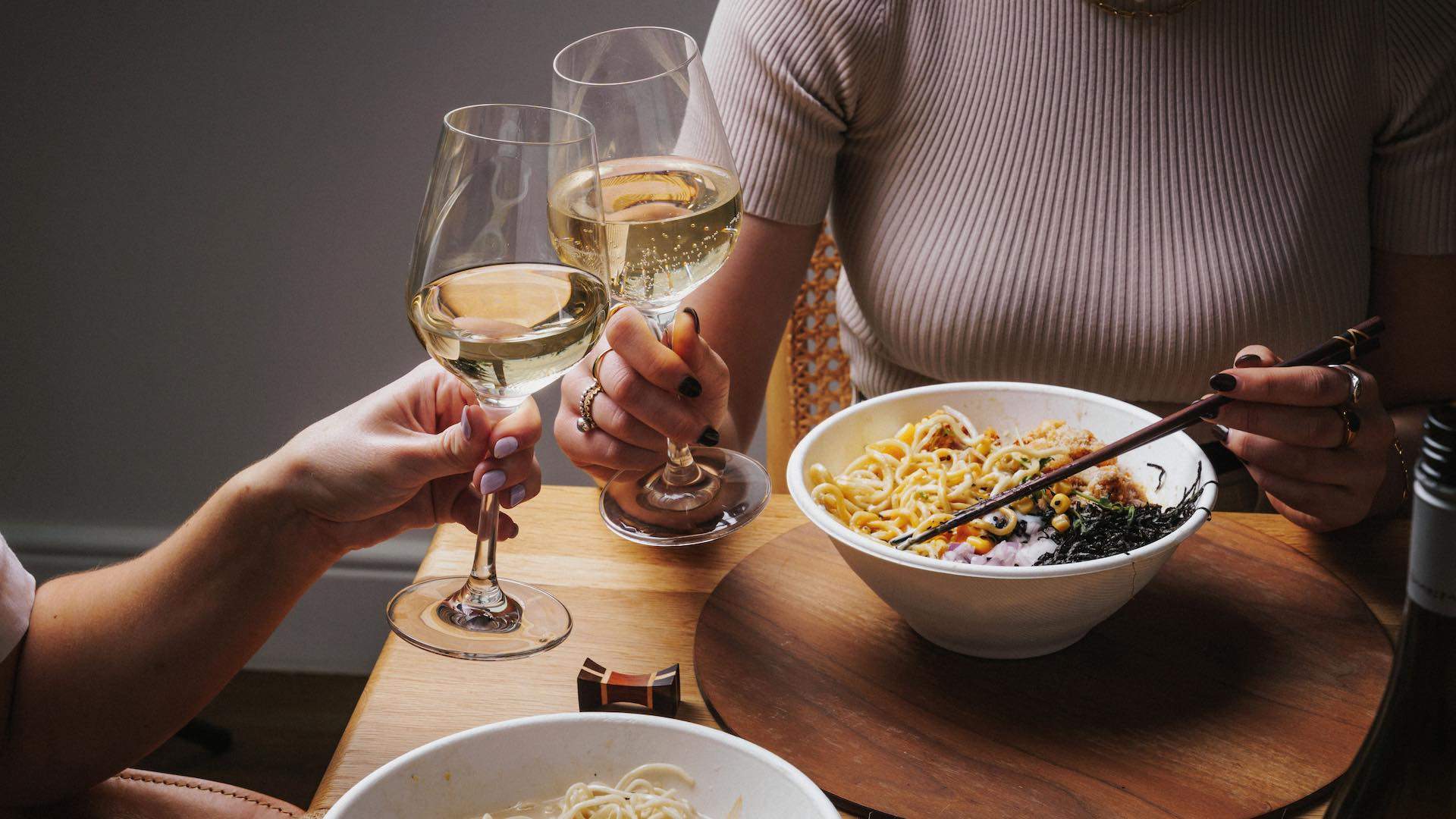
A No-Bullsh•t Guide to Pairing Wine with Food
Like most things in life, balance is the cornerstone of any good food and wine pairing.
A successful union creates a symbiotic relationship between the dish and wine; neither element overpowers the other. You need to consider both the weight of the wine (i.e. how heavy or light it is in flavour) and the meal as well as the flavours within both.
You can do this in one of two ways: pick a complimentary element such as the citrus notes in an Australian-style arneis acting like a squeeze of fresh lemon juice on an oyster. Or, as a contrasting pairing, choosing something that draws out a flavour in a wine — the classic pinot noir and roasted duck combo, for example, means the gamey character in those duck pancakes you love enhances pinot noir’s natural red-fruitedness.
To get you started, we’ve joined forces with Innocent Bystander to put together a list of tried and tested lessons in food and wine matching (basically, we did a lot of eating and drinking — you’re welcome) for you to try at home the next time you’re playing around in the kitchen, or you’ve crashed on the couch waiting for your food delivery to arrive.
Perfect Pairings
Four wine and food pairings to get you started
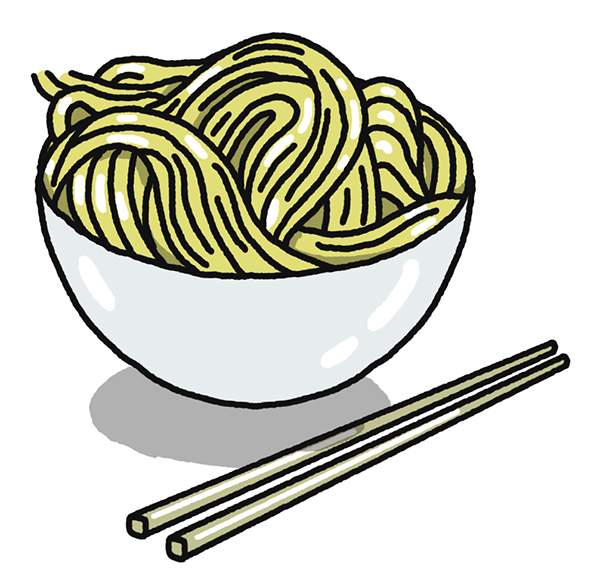
Now, the last thing you might want with your slurpy bowl of goodness is more liquid, but this is where more decadent white wines can really shine.

Greasy, juicy fried chicken, meet your new best friend — think chilled reds, rosés and skin-contact whites.

Two words: aromatic wines. Think of them as aloe vera for your tastebuds.

For those who can’t face a 3pm sugar crash, we’ve got the solution: bubbles of all shapes and sizes for a bit of pep in your step.
NOODLES
Pairing wine with noodles brings us to our first lesson in food and wine matching: think about your dish’s weight and your wine’s weight and adjust accordingly. There’s a hidden depth to most noodle dishes, from the richness of a black garlic miso ramen or a pimped-up at-home Mi Goreng.
Your wines need to be just as complex and layered, with enough structure and depth as the bowl of slurpy goodness that stands before you. For that, there can be only one solution: a medium-bodied white (we’re looking at you, chardonnay).
Grapes that live in the medium-bodied white family include chardonnay, viognier, marsanne and albarino, to name a few, and they all have a weight to them that you can feel on your palate. Innocent Bystander’s 2021 chardonnay, for example, is as sophisticated as it is versatile, and an ideal counterpoint to a noodle dish with depth. Think of the sensation of drinking full-cream milk versus skim milk. This structure creates balance to the buttery characters of an egg noodle and won’t be overshadowed by the depth of flavour in a soy-braised eggplant soba noodle dish.
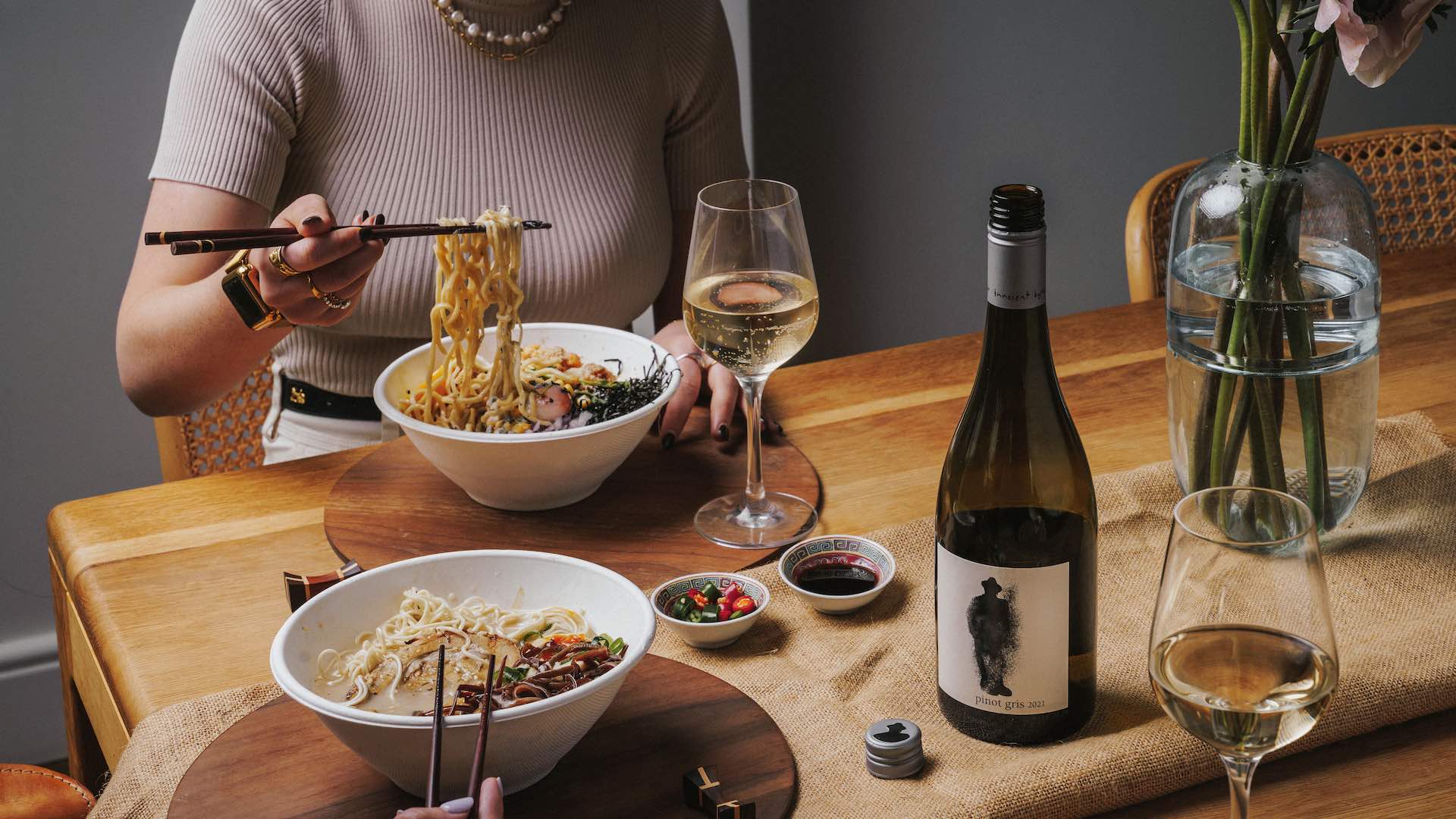
SPICE
Spice is every sommelier’s and winemaker’s nightmare. In basic wine-tasting principles, you want the wine to pair cohesively with all fruit, acid and alcohol elements integrated with the dish. But what’s the one thing that spice does? It exacerbates all those elements in the wine. It’s why aromatic whites are your secret weapon when pairing with spice, particularly pinot gris — like Innocent Bystander’s zippy 2021 Pinot Gris — or pinot grigio.
The neutrality and subtle citrus notes in gris/grigio mean there is versatility across the width and breadth of aromatic spices — from garam masala and coriander root to Sichuan pepper. Gewürztraminer is also a classic match with the soothing rose petal and lychee notes counteracting the fire created when inhaling your favourite curry.
The citrus notes in riesling will pair with your more aromatic spices like Thai basil and kaffir lime leaves, so that’s your BYO option for Saturday nights at the local Thai restaurant sorted.
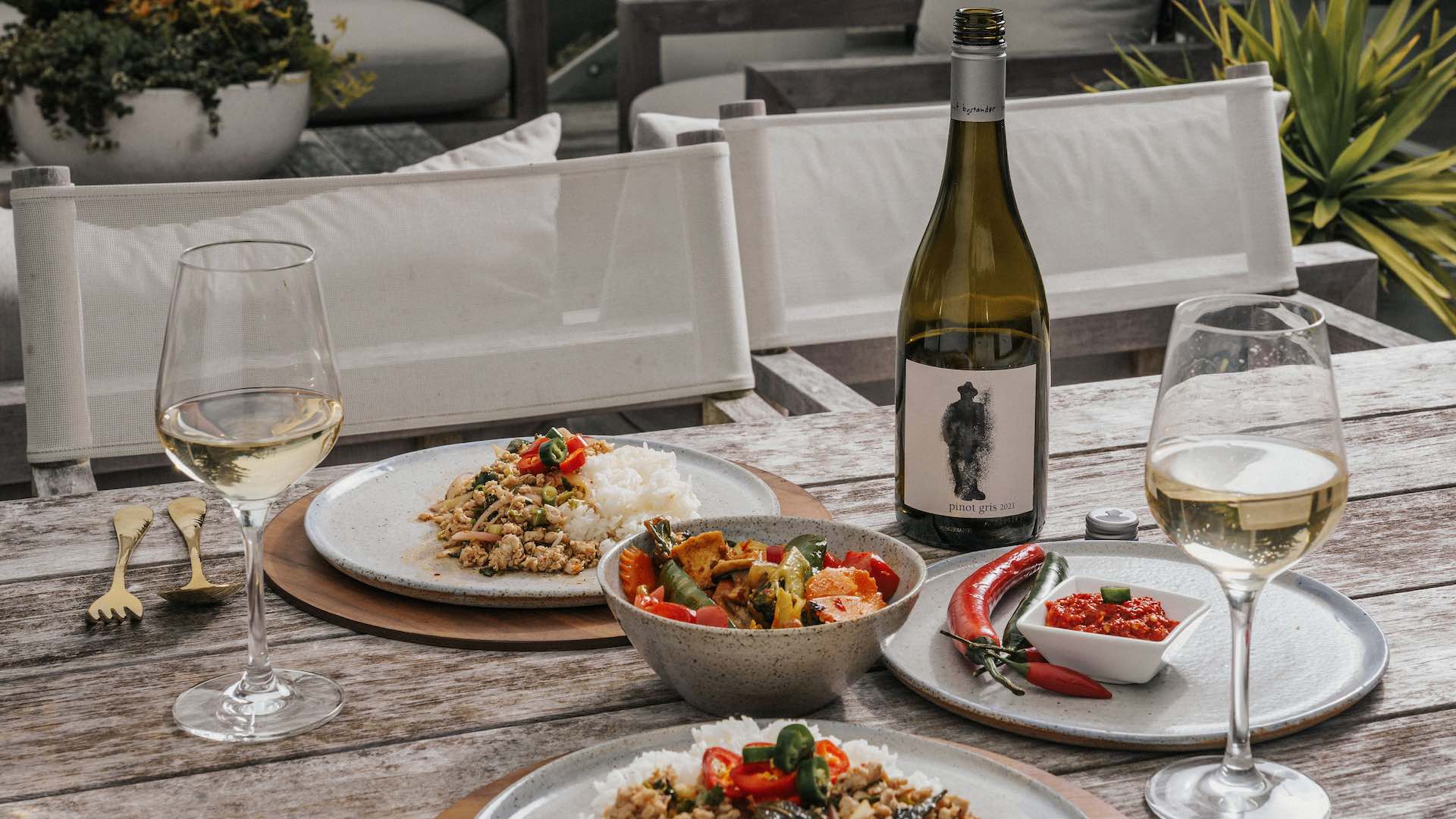
FRIED FOOD
It’s time to throw out that old rulebook that says red wine with red meat and white wine with white meat — because fried food is the great equaliser. Here, it becomes less about trying to pair flavours and more about “Give me some crunchy and refreshing acidity to cut through all this grease”.
Rosé and lighter reds chilled in a fridge (or ice bucket) — think pinot noir and gamay, or even this bright and juicy blend by Innocent Bystander — are perfect choices. Those high-toned red flavours that these wines exhibit, such as cranberry, raspberry and wild strawberry, will work their magic on an oozing cheeseburger. The same can be said of whites that have undergone skin contact during fermentation (AKA orange wines), enhancing the tannins of the wine (which are found in the skin) to create a drying sensation on the palate, which you can now coat in grease from your bucket of fried chicken.
Pro tip: don’t let the colour of your wine lead you astray; not all darker-coloured rosés are automatically sweet — in fact, they rarely are. Some have bolder fruit flavours with a dry finish. The same can be said of your skin-contact and ‘orange’ wines; colour is not an indicator of a particular taste.
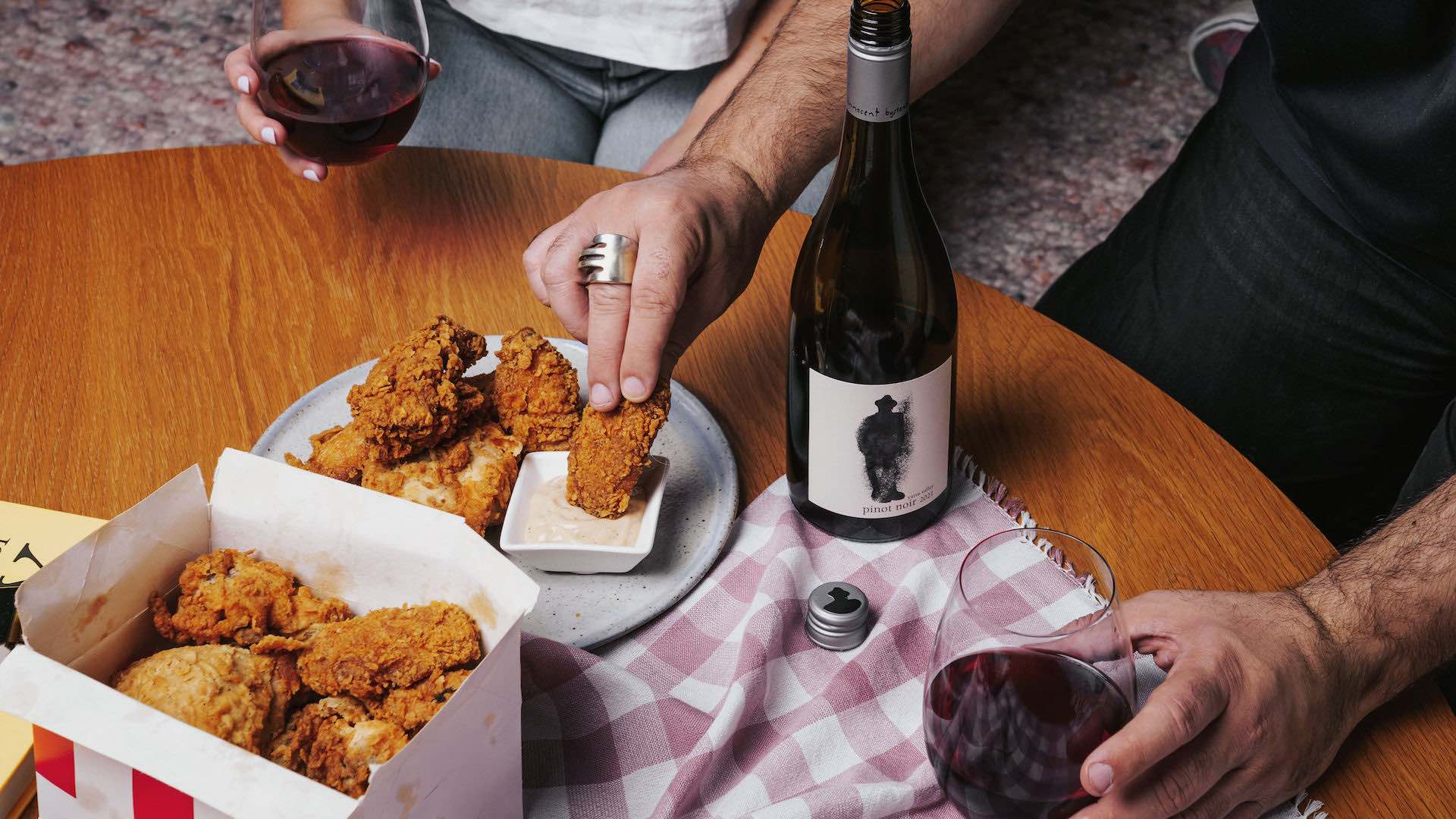
DESSERT
Unlike on a first date, too much sweetness can be a bad thing. So when it comes to dessert and wine pairings, less is more. This is where your lesson in contrasting pairings will come in handy.
Every day becomes your birthday when you pair a glass of sparkling with dessert. The inherent dryness of champagne and sparkling wine creates a nice counterpoint to the range of desserts you want to throw at it. An exquisite match uses the natural flavours of pear and apple in prosecco to enhance the sticky caramelised notes in a tarte tatin, for example.
For those who do want to double down on the sweetness, we’ve got you covered with the sweet fizz: an Innocent Bystander Moscato. The natural acidity and lift on the palate from the bubbles, plus the fruity hints in the wine create a sweet and sour combination that will pair beautifully with the richness of a Portuguese custard tart or pavlova.

Looking for your next great wine? Head to the Innocent Bystander website.
Illustrations: Barry Patenaude.
Images: Declan Blackall.